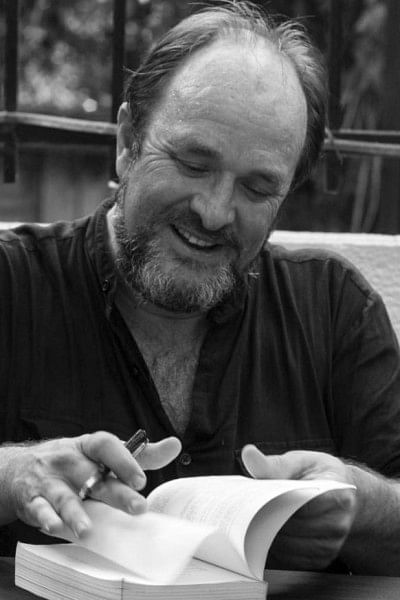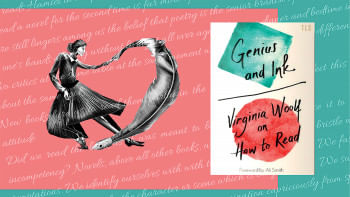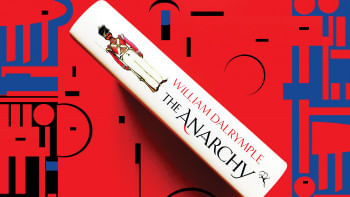How I feel about Virginia Woolf being part-Bengali

I woke up to a tirade of messages on Tuesday, some from fellow academics who knew about my adoration towards Woolf and others from men in my Instagram DMs desperate to start a lukewarm conversation. All of these were links to the recently published article on a national daily titled, "Virginia Woolf was Part-Bengali, Says Great Nephew".
The great nephew in question is William Dalrymple, a household name for historophiles—the Delhi-based Scottish historian, critic, curator, and photographer, whose interests include the history and art of India, Pakistan, Afghanistan, the Middle East; Hinduism, Buddhism, the Jains, and early Eastern Christianity.
Dalrymple, when asked to share something about his great aunt Virginia Woolf during an interview by The Space Ink, first disclosed this information; it quickly made the rounds around the newspapers and social media picked it up too. The little snippet he shared drew a lovely, lush picture of Virginia Woolf's Bengali genealogy. He touched up on their common ancestors, seven Bengali sisters from Chandannagar (formerly Chandernagore) decked up in exotic Indian ornaments and fine clothing strutting along the streets of Kolkata, London, and Paris, and goes to state that, if one observes her portraits closely, the Bengali features are very obviously discernible—"She has a very Bengali face".

I instantly thought of how even claiming that someone has a "Bengali face" is a very "Bengali" thing in and on itself. It took me back to the many conversations I had had with my mother, aunts, and grandmothers about a certain poetic softness and circularity of facial features found in the imprint of this mythical Bengali face. A well-known saying in my family is that the curvatures of these faces reflect the turns and stops of the countless rivers meandering through the Bengal delta.
But Woolf had a regality in her appearance, an aura of austerity almost, and that of quiet detachment. I don't think I agree with Dalrymple. However, taking a look at the monochrome side profile which the newspaper daily showcased alongside the article, I could not help but wonder about the certain je ne sais quoi in her face and her oeuvre. Maybe I loved her so because we were daughters of the same soil, to some extent, at least. It made me smile. But I also sneered at myself a little bit, because her soil had also ripped apart mine for over 200 years.
Overnight, a large number of people have become newly interested in reading Woolf's works. It took my friend almost a second to draw parallels between Woolf's act of suicide and that of Tagore's unfortunate muse, Kadombori Devi. I had always heard this friend of mine talk of Kadombori Devi's tragic fate with a sort of disagreeable sentimentality. With teary eyes and a red nose, she would talk of Kadombori's lack of affinity for the culinary arts and Bengali hospitability, and most of all, about her struggles to live up to the flares and fame of the Thakurbari. All of a sudden, she was looking up Virginia's last note to husband Leonard Woolf, reading her words, "I can't fight any longer [...] without me you could work", with the same kind of a pained expression on her face, comparing Kadombori's discontentment with her social and familial bubble to that of Woolf's towards her own self. This interesting bit of trivia, of Woolf having a trace of Bengal in her, I noticed, had lessened the space between my friend and the writer of the faraway, cold Britain, with its many regulations and uptightness. Others drew up imperative but apparent associations, like that between her and the conjurer of Sultana's exploration through Ladyland.
I, however, was not thinking of Ophelian heroines, and my friend's comparison seemed a tad bit far-fetched. No; to me, the links between Woolf and Bangla and Bengal—linguistically, philosophically, and poetically, came through by closely reading certain portions of her works.
In the concluding chapter of Orlando, Woolf's 1928 novel on gender fluidity, the protagonist-poet goes to a nearest telegraph office and writes about life, literature, and ultimately sums it up by writing "Rattigan Glumphoboo" that is supposed to condense the entire experience of the enigma that is life. Upon doing so, Orlando believes that the "fabric of life" is now magical. She realises for the first time that fame has nothing to do with poetry. She asks, "Was not writing poetry a secret transaction, a voice answering a voice?" Reading these lines alongside Rezwana Choudhury Bonna's orchestral version of "Ananda Dhara Bohiche Bhubone" made me feel that this magic Woolf talked about, the inexplicable, heightened joy the poet was feeling, are the blowing winds of this ananda.
Woolf's pages appeared to me to be riffed with the same flowy consciousness of joy which Tagore wrote of while referring to the Anandadhara blowing through the earth—Charidike dekho chahi hridoy proshari/khuddro dukkho shob tuccho mani/prem bhoriya loho shunno jibone.
Another instance when reading Woolf I was reminded of Bangla verses was when I first came across the line, "The day waves yellow with all its crops", in my most favourite novel of hers. The Waves (1932) is considered to be one of her most formally experimental works and centres around six characters who grapple with the death of a beloved mutual friend.
James Wood, an English literary critic, in his book How to Read Fiction (Farrar, Straus and Giroux, 2008) mentioned the brilliant peculiarity of the structure of this sentence. It evoked in him a feeling of "everything blazing in sunlight— a yellow semaphore, a sea of moving colors…" To me the sentence suggested a sense of recognition; it wasn't jarring but familiar—like the mighty, gold flap of Jibanananda's kite and the gilded fields during hemanta, which brushed me with a coat of relentless yellow and gold too.
The Woolfian brand of stream of consciousness has a certain sense of the lyricism to it, which could remind one of the effervescent mellifluousness of the Bangla language. But there are certainly many ways in which Woolf conjures in her prose aspects of the British quintessence. One could point out how in the apt modernist strain, she talked about the fragmented, hollow lives of Post War Britain by focusing on individual voices, an example of which is Septimus in Mrs. Dalloway, but I would talk of Orlando yet again. The protagonist in his journey, through the ages, exists as a marginal voice as reactions/resistances to the many given traditions of British Literature. In doing so, Woolf brilliantly parodies these said traditions. That being said, however, Orlando remains having this steadfast connection to the soil of Britain; even though there are elements of wonder that the poet feels towards different cultures or ethnicities, seen through the his/her infatuation with the Russian Sasha or of sexual metamorphosis of turning from a man to a woman in Turkey, Orlando comes back to claim the rights over his/her ancestral house, comes back to the British earth, back under the oak tree where his/her magnum opus had been written.
While discussing at length about this section, this angle of coming full circle to one's native soil reminds me of Madhusudan Dutt's lines from the poem "Kopotakkho Nod", said to have been weaved at Versailles whilst yearning for Bengal—Bahu desh dekhiyachi bohu nod dole/kintu e sneher trishna mete kar jole/dugdhosrotorupi tumi matribhumi sthoney.
In conclusion, I suppose I do feel some kind of satiation knowing that Virginia Woolf, an artist I love and have bountiful devotion for, has a tinge of Bengali blood. I feel as if in my imaginings, in my poetic reveries, I can have a conversation with her about the implications of words such as obhishar and biroho, without having to translate it into English. And in my mind, I am telling her how the nuances of these sentiments lurk up in so, so many of her works and her letters to Vita Sackville West, all whilst showing her the highlighted bits from my Vintage editions of her books with swirls of blues and reds on the cover.
In my mind a Bengali Virginia finds comfort in Bangla, in monsoons and (maybe, for the touch of humour, may I add?) reels of her writing The Waves with a slow reverberated version of "Cholona Ghure Ashi" playing in the background.
Jahanara Tariq is an Adjunct Lecturer at Independent University, Bangladesh (IUB).

 For all latest news, follow The Daily Star's Google News channel.
For all latest news, follow The Daily Star's Google News channel. 










Comments